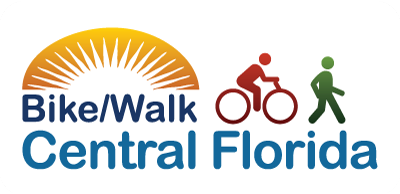Engineers are hard at work every day, innovating new ways to make roads safer for walkers and bikers. From protected bike lanes to zombie crosswalk lights, there have been countless attempts to protect all road users. But, not all of these imaginative solutions are created equal.
So, we’re reviewing a few technological ideas– to find out which ones we think are credible and which ones are questionable.
Protected bike lanes – CREDIBLE

Protected Bike Lanes
It probably seems obvious why this safety feature has been proven to save lives time and time again – more physical distance from cars is always better for cyclists. It makes them feel more confident on the road and protects them from distracted drivers who could swerve out of their lane. Though, not all protected bike lanes (also called cycle tracks) provide the same level of protection, it depends on how they are separated from the road. Cycle tracks separated by painted lines or a row of parking spaces are at the less safe end of the spectrum – those separated by a grass or cement medians are at the top.
3D crosswalks – QUESTIONABLE

Photo credit: Gústi Productions
No, they’re not actually 3D – your car will be just fine. These are crosswalks that are painted to look like they’re sticking up out of the ground. Meant to gain the attention of drivers and encourage them to stop, this feature would be cheap to install. Other types of unique crosswalk paint – like this one painted like a keyboard – could also have the same effect. Unfortunately, there’s no data to back up the effectiveness of this crosswalk innovation. Plus, some people have pointed out that the paint could lose impact after the first few times a driver sees it.
Leading pedestrian interval systems (LPIs) – CREDIBLE

These innovative systems have proven to be effective and cost-efficient when cities have the capability to install them into pre-existing traffic communications networks. LPIs ensure pedestrians always have the right of way by issuing the “walk” signal at a crosswalk three to seven seconds before the light for drivers turns green. This way, walkers are already well into the crosswalk – and far more visible than on the sidewalk – by the time drivers make a right or left turn. The National Association of City Transportation Officials has estimated that LPIs can reduce pedestrian crash rates by up to 60%. We’re on board!
Augmented reality in Google Maps – QUESTIONABLE
Zombie crosswalk lights – QUESTIONABLE
Don’t worry – there are no actual zombies involved in this crosswalk technology. Named for so called “zombie pedestrians” who don’t look up from their phone when they walk, these LED strips on the sidewalk display the color of the upcoming stoplight. This way, pedestrians don’t have to look up from their phone in order to know when it’s safe to cross the road. Could this be a good idea? Sure. Is there any actual proof that they work? Not yet. Zombie crosswalk lights haven’t made their way to the U.S., but they have been used by governments in other countries to cope with distracted walkers.
Rectangular rapid-flashing beacons (RRFBs) – CREDIBLE

You’ve probably seen them in your neighborhood: pedestrian crossing signs with a button on the side that will turn on flashing lights when you’re ready to cross. This crosswalk safety technology has proven to be effective time and time again – but comes with a pretty hefty price tag. Though, if cities are willing to install them, they are worth every penny in pedestrian lives saved. RRFBs can reduce pedestrian crashes by up to 47 percent, according to the Transportation Research Board.
Road Diets – CREDIBLE

Denning Dr., Winter Park. Photo credit: Orange Observer.
The road diet – no, it’s not when you cut back on the Doritos on your trip from Orlando to visit your cousin in Miami. Road diets are used by city planners and involve taking large, multi-lane roads and shrinking them down to one or two lanes. City planners often use the extra space created by eliminating lanes to install protected bike lanes, cycle tracks, multi-use sidewalk paths and additional landscaping. Cutting down on road size can actually ease traffic congestion, even though it seems counter-productive. What happens is that some drivers will adjust to use other nearby roads, thus decreasing traffic to the now-2-lane road. Distributing cars among several, smaller roads, not only saves drivers time, but slows their speed down enough to make streets safer for walkers and bikers. It’s a win-win!
Pedestrian Bridges – CREDIBLE

Photo credit: MetroPlan Orlando
What’s a better way to keep pedestrians safe than removing the need to cross the road entirely? Pedestrian bridges do that – they allow walkers to cross above the road, where not even the most distracted driver could hurt them. The Colonial ped bridge, seen above, elevates bikers and walkers to cross over railroad tracks and a dangerous intersection. The downside? Pedestrian bridges cost millions of dollars and take years to engineer and build. It’s not a quick and easy solution, but it definitely saves lives.

